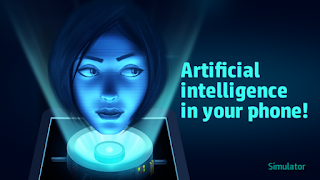--AD--
Trends in the world of technology move fast, in 2016 it was all about virtual reality and in 2015 it was all about the Internet of Things. 2017 has been the year of machine learning, neural networks, and artificial intelligence, as a number of great mobile apps have been developed specifically for Android and iOS devices.
For those of you that still do not understand exactly what AI/ML is all about, here’s a quick introduction.
There are currently around 3.8 billion internet users in the world, a majority of them are now browsing online via their phones and not their computers, so it is important to move machine learning and artificial intelligence into smartphones and tablets, as this is where most people are.
With mobile app development, it is possible to create a digital assistant in just a few hours, using Google’s TensorFlow and their ChatBot extensions, but the implications go much further than just helping us out with everyday tasks.
A number of mobile apps are now entering the healthcare industry, with clever mobile apps helping patients keep track of their medicine, and some advanced applications are even learning to diagnose illnesses based on symptoms, all without ever consulting a doctor. It is only a matter of time before our smartphones can run a complete physical scan of our bodies and determine whether we need to seek help or not.
Conclusion
Soon enough, the hardware will be powerful enough to simulate our human brain, complete with neural synapses, and perhaps that will mean a giant shift in how humans work and live. But for now, we are still working on building better, faster and smarter.
=========
This is a Guest Post by Pedersen Mark, He writes instructive technology-related Articles.
=========
For those of you that still do not understand exactly what AI/ML is all about, here’s a quick introduction.
Traditional programming
Normally you program software by writing conditional statements. This means that if X is true, the program does Y, and if X is false, the program does Z. This is limited since humans have to program what happens when X is both false and true, and humans have to consider all options and program all these options into the software.Machine Learning
With machine learning, you tell the computer that you want Z or Y to be true, and it looks at X to find out what needs to change and then tries all the different combinations until it finds a solution that matches what we asked for.Modern hardware and software
Previously we were limited to creating these advanced algorithms on desktop computers as mobiles and tablets were not powerful enough to run the complex simulations that are required for true recurrent neural networks. But now we have much better processing units inside our small devices, and developers have made much faster versions of machine learning frameworks that we can now use directly in mobile applications.
From digital assistants to life-saving apps
There are currently around 3.8 billion internet users in the world, a majority of them are now browsing online via their phones and not their computers, so it is important to move machine learning and artificial intelligence into smartphones and tablets, as this is where most people are. With mobile app development, it is possible to create a digital assistant in just a few hours, using Google’s TensorFlow and their ChatBot extensions, but the implications go much further than just helping us out with everyday tasks.
A number of mobile apps are now entering the healthcare industry, with clever mobile apps helping patients keep track of their medicine, and some advanced applications are even learning to diagnose illnesses based on symptoms, all without ever consulting a doctor. It is only a matter of time before our smartphones can run a complete physical scan of our bodies and determine whether we need to seek help or not.
Conclusion
Soon enough, the hardware will be powerful enough to simulate our human brain, complete with neural synapses, and perhaps that will mean a giant shift in how humans work and live. But for now, we are still working on building better, faster and smarter.
=========
This is a Guest Post by Pedersen Mark, He writes instructive technology-related Articles.
=========



Comments
Post a Comment
Important - If you ask a question make sure you tick the "Notify Me" box below the comment form to be notified of follow up comments and replies.